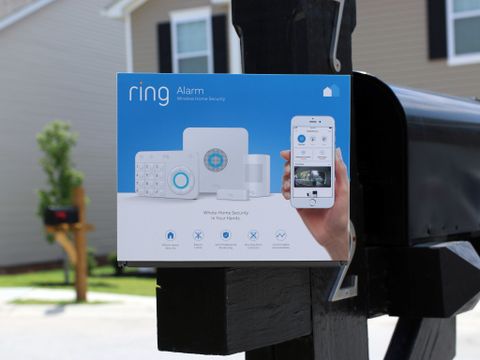Android Central Verdict
Price: $199Bottom line: For under $200, it's going to be hard to find a better DIY alarm system. The installation is easy and the added peace of mind is invaluable. Ring has plans to make more sensors available which will make the system even more robust.
Pros
- +
Great price and value
- +
Easy to install on your own
- +
Hardware looks great and is built well
- +
Integrates easily with your existing Ring equipment
Cons
- -
Sluggish app performance at times
- -
Limited additional sensors at launch
Why you can trust Android Central
After shipping later than expected, is the Ring Alarm still worth your time? There are a bunch of alarm systems available that you can buy and install yourself these days, but there are a few key points that make the Ring Alarm stand out. From the ease of installation to the low monthly costs, the Ring Alarm system ticks a lot of boxes on paper that people will be looking for, but how does that on-paper experience compare to the real-life one?
We've been using a Ring-supplied review unit for about two weeks now with a beta version of the app. The version of the app shown in this review will be released to the public in the coming weeks.





Getting Started
I'll be the first to admit, the thought of installing the alarm system on my own was a bit scary, and I didn't know that I would be able to get it done. I'm not exactly the handiest person, and my wife doesn't like things to be messy in our brand new house. Ring does an incredible job at making the unboxing experience extremely easy by labeling everything so you exactly what goes with what. In just under 90 minutes I was able to get everything out of the box and set up, including mounting the hardware.
The kit comes with a base station, keypad, contact sensor, motion detector, and range extender. Since Ring is pre-packaging all of this, all of the pieces are designed to automatically talk to each other, which makes setting them up easier, but could lead to some confusion when things go wrong. You won't be able to take any of these parts and integrate them with another Ring Alarm system, just the one they come with.
As for the base station, you can hardwire it to your router or connect to it via Wi-Fi. I opted to hardwire it, in hopes that it would provide a more stable connection, considering the importance of it. There is an AT&T SIM card inside of it as well, which is what the system uses as a backup for when your internet connection goes down. The cost of this SIM card and its service is covered in the monitoring plan. Once the base station is powered on and hooked up to your router, you can add it your account.
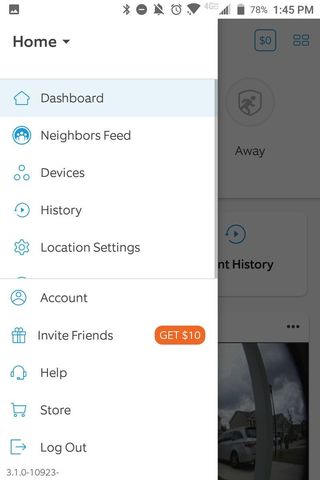
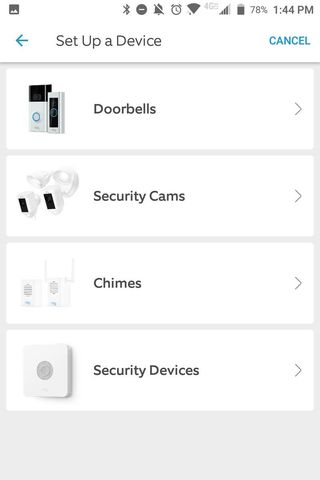

The Ring app will automatically detect the rest of the items that came pre-packaged with the base station once its initial set up is complete. You'll need to pull plastic tabs on each piece so that they can power up, and you'll want to do this one at a time. If you pull all the tabs at the same time, the system tries to connect to multiple devices at once and slows down the setup process.
As you set up each piece, you're able to give it a name (like Front Door, Office Window, Main Hallway, etc), and then a location of where it is in your home, as well. Within the app, the devices are grouped by type, and the names that you give each piece is displayed to help you know what is what. While setting up the keypad you'll be asked to create a PIN number that you'll use to engage and disengage. If you have additional family members, once you share the new equipment with them in the app, you can set PIN numbers for them as well.
Using it daily

After the hardware itself is set up, you can pretty much forget it's there, except for the keypad. You won't need to adjust the sensors regularly or clear alerts on them, everything you do from here on out is done via the app or keypad. It's worth noting that since the sensors aren't hardwired, you will need to change the battery at some point, though Ring says that the included batteries should last for up to three years with normal usage.
The learning curve was pretty quick once I started playing around with it. Immediately following activation, Ring puts you in a seven day trial period, which is great because I set off the alarm a handful of times because I wasn't used to having it. The trial period lets you use everything the way it's intended, except that when the alarm goes off it won't alert the monitoring company. You can end the trial mode at any point if you prefer to just get right into the full monitoring services.
Ring's updated app (which will roll out to everyone in the coming weeks) brings lots of improvements for those invested in the ecosystem. You have quick and easy access from the main screen to the alarm features, as well as a glimpse of what your cameras are seeing. Things can be a little slow to load, depending how much equipment you have, but most of the time it works great.
Professionally monitored
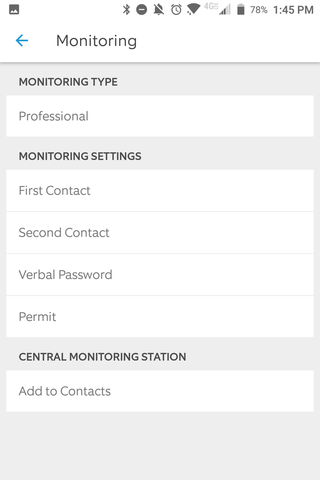
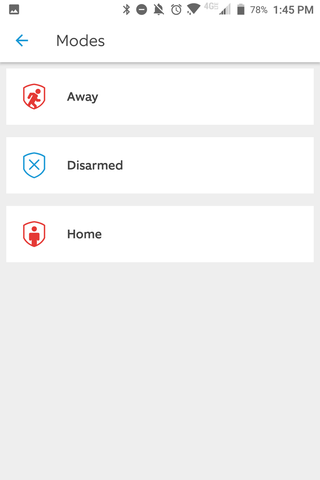
Speaking of monitoring, there are different modes that you can set when arming the alarm. When you're at home, there are two choices, including Disarmed and Home. With disarmed, there is no 3rd-party monitoring happening, so you can open and close the doors, windows, and more as you please. Home mode is used for times like when you're home alone or going to bed, and there is external monitoring involved. With Home mode, you can opt to change which sensors are active and which aren't, which is great for if you don't want a motion sensor to go off because of your pets or something.
The final alarm choice is Away, which engages all of your sensors by default and activates the external monitoring services as well. Much like with Home, you can opt to not include certain sensors if you want, and those settings are all controlled through the app. With both Home and Away modes, you can set an entry and exit delay, which is a buffer period that allows you to get in or out and disengage the alarm before the monitoring company calls.
As for pets, Ring says that its motion sensors won't detect animals under 33 pounds, as long as the sensor is placed at its recommended height, which is between seven and eight feet high. I've yet to experience any issues with my 45-pound dog falsely setting off the sensor coming down the stairs so far.
Some improvements can be made
For all the things that the Ring Alarm system does well, there are still some areas in which it can be improved. One of my biggest annoyances with the system is that there is an audible alert for when a contact sensor is opened, but there is no alert for when it's closed. I have a sensor on each of the three doors that lead into my house and while it's great to hear a noise that they've been opened, it would be awesome to hear a confirmation that they've been closed as well.
..but there is no alert for when it's closed!
While setting the system up, my motion sensor got hung up and wouldn't stop detecting motion. I had to reset it, which I did through the app, but since it was part of the kit, the process was a little different than the app stated. This was a minor annoyance, but worth noting that if you ever run into an issue with any of the pieces that come with the kit, you'll need to do a full reset of that piece so that the base station can see it again.
Finally, at times the app is slow to connect to the system. For the most part, this isn't an issue, but I've run into a few situations where my kid opened the door to help me out and the alarm started sounding and it took up to 30 seconds for the app to connect to the alarm system. Luckily, I have had enough time in my entry delay period to get it disarmed before the monitoring company was notified, but I'd like to see the app delay disappear.
The extra costs
For the Ring Alarm to function properly, you'll need to subscribe to Ring's Protect Plus plan, which is $10 a month or $100 if you prepay for the year. It includes 24/7 professional monitoring, video recording, reviewing, and sharing for unlimited cameras, 10% off purchases made at Ring.com, and an extended warranty on all of your items as long as your subscribed.
In conclusion
So, is the Ring Alarm for you? If you're looking for a DIY alarm system that provides external monitoring and doesn't cost a fortune, I'd have to say that this is the option to consider. There is no shortage of great options out there from companies like Nest, SimpliSafe, and more, but they all come in much more expensive than this. At under $200 for the base package, it's really hard to beat what Ring is offering here.
If you already have a Ring doorbell or security camera, the integration is quite seamless, and the value becomes even better on the annual costs. Ring charges $30 a year per camera on the regular subscription, so if you've been holding out on adding to your system, this may push you over the edge. The company has plans to offer additional sensors in the future, like smoke and CO sensors, water sensors, and more, which will only help make it even more robust.
4.5 out of 5
As icing on the cake, some Homeowners Insurance policies offer discounts for professionally monitored alarms, so you'll want to reach out to them to see if you qualify!
Looking for an affordable Ring device? Here are the best Ring product deals available right now.
